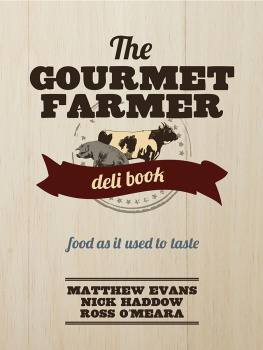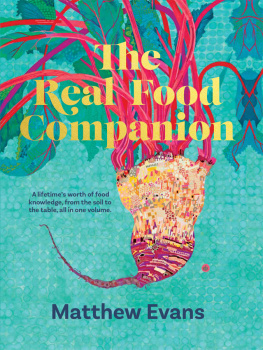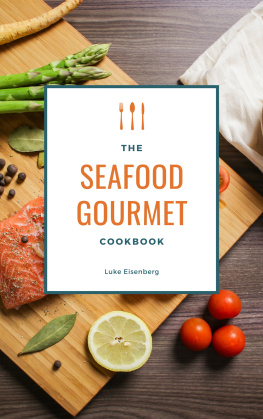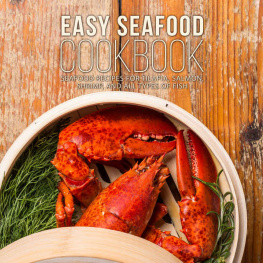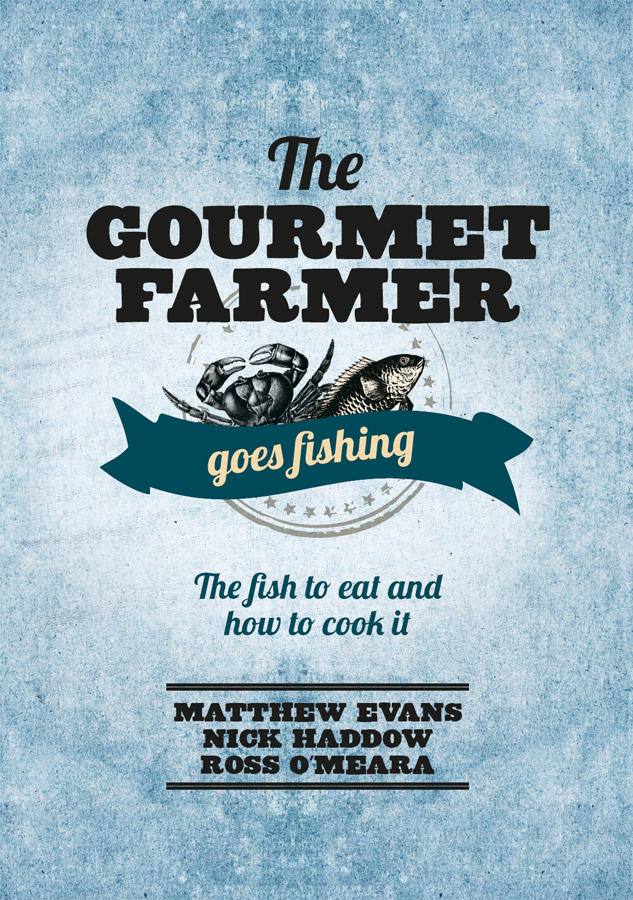CONTENTS


INTRODUCTION
We like to fish. We like to eat. We also like to think that we are not destroying the ecosystem with what we catch and cook.
This book is a celebration of our coastal lifestyle in Tasmania, but also one that relates to fish of all types from all places. Weve covered oily and sweet, white and dark. Fish that we catch (even if rarely) and fish we can buy. Fresh, sensational seafood that is as much about place as it is about plaice (though youll have to use the flounder recipes for plaice ).
We are fortunate to live on an island that is as rich with food as it is inspiration. All three of us live within a stones throw of the water and its where we naturally gravitate to play together and gather food. Our interest in eating is driven by what we love to do on our days off, and what we know about the oceans that provide for our table. What started as Matthews journey to find out about seafood which species we have, where they come from, how theyre caught or farmed culminated in a search for flavour. What began as an epic boys sailing trip around Tasmania to film The Gourmet Farmer Afloat ended up in a moving feast from the cold waters around our island home. And this book, written virtually entirely on board the boat, is the result.
All of us are on the prowl for flavour. Flavour from species perhaps rarely heard of. Those fish that are lesser known, have a (usually) cheaper price tag, but with a huge gastronomic reason to eat them. Fish where we know the origins. Weve avoided fish like Atlantic salmon, because we arent yet confident of the sustainability or suitability of their feed or their farming. But we have included wonderful-tasting, little-utilised seafood, such as clams, leatherjacket, skipjack and mullet.
The result is our take on seafood, with recipes that have inspired us from our travels and our palates. A curious mix of nations from Japan to Spain, India to Mexico and all around Australia has been our muse. And yet, what inspires us most is the grand taste of things from the sea, be it as scary as a sea urchin or as noble as a cray. And we hope youll be inspired to see the ocean in a new light, too.
FROM THE SHORE
ROLL UP YOUR TROUSERS AND TAKE A STROLL ALONG THE BEACH. CARRY A BUCKET AND A ROD WITH YOU, BECAUSE THERE IS FOOD TO BE FOUND HERE. THE INTERTIDAL ZONE MIGHT NOT BE THE FIRST PLACE YOUD THINK OF TO GATHER A MEAL, BUT WE PROMISE THAT, WITHOUT TOO MUCH EFFORT, YOU WILL FILL THAT BUCKET.
Many edible shore plants grow on the edge of the beach. Where we live, a walk will turn up native saltbush as well as samphire and pigface succulents with crunchy, slightly salty leaves that just need a quick blanch to make them delicious. Seaweed also washes up here, which can be dried and used for stocks.
The sand dunes are home to muttonbirds a Tasmanian delicacy thats been hunted by the Indigenous people for thousands of years. Muttonbirds are the fledglings of shearwaters that dig burrows to lay their eggs and raise their young. Crouch down and thrust your arm into a burrow, put up with the pecking and thrashing, and break the young birds neck with a flick of your wrist. It is not for the faint-hearted. Ross is brilliant at cooking muttonbirds, which is fortunate because theyre an acquired taste something like a mix of quail and sardines.
Turn up your trousers a bit more and get your feet wet. Buried in the sand are clams and cockles. Blue mussels and periwinkles cling to the rocks between the tides. Rogue Pacific oysters from spat thats escaped from coastal farms can be pried from the rocks, too. With luck, youll find a native angasi oyster in the sand.
Now strip down to your underpants, stand in the wash of the breakers and throw a line in. Australian salmon, mullet, tailor or a squid will be your reward. Or, if you wait for nightfall and the wind to drop, and wade in with a light and spear, you might get a feed of flounder.
Ready to move to Tasmania?
CLAMS, COCKLES, PIPIS, MUSSELS AND WINKLES
If philosopher and ethicist Peter Singer is on the money, shellfish are what we should all be eating. He argues that they are the sustainable, nutritional and ethical choice in seafood because they are plentiful, extremely nutritious, can be farmed through low-impact aquaculture and do not have a central nervous system, so therefore do not suffer the inhumane treatment we tend to inflict on other farmed animals.
We completely agree with him, but perhaps he has missed the point. They are also delicious.
Clams (vongole), cockles and pipis exist around the Australian coast in many different forms and wed be nuts to ignore them. When we were growing up, they were seen as little more than fishing bait. These days, we wouldnt dare waste them that way. Big plates of steamed or stir-fried pipis flavoured with ginger or XO sauce, or linguine with garlicky clams, are more our style.
They are the ultimate hunter-gatherer food the wild mushrooms of the shoreline. Anyone with a bucket and a sense of adventure can gather a feed off the rocks or out of the sand. A little local knowledge helps, but a keen eye will soon reward you with a bucket full of clams or mussels. We have gathered clams, cockles, mussels, winkles and pipis from every part of the Tasmanian coast, from Flinders Island to Bruny Island.
The big difference between clams, cockles and pipis is species (and also regional naming variations around the world, which makes things confusing). From a culinary point of view, we treat them all the same. Their relative unpopularity locally means they are uncommon commercially, but the good news is theyre usually pretty cheap. If harvested from the wild, they will need purging (if commercially harvested, they should already be purged, but check first). To do this, keep them in cool, slightly salted water overnight (not in the fridge or they will close tight and not release their grit). Cook them briefly just until their shells open and discard any that dont open.


